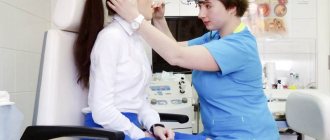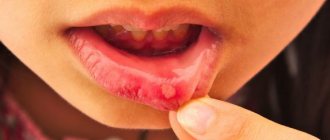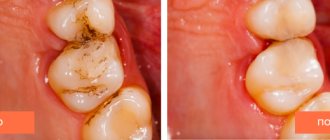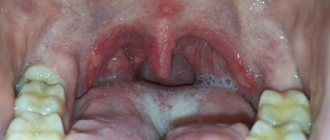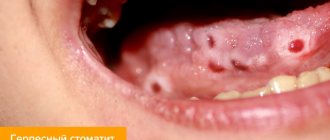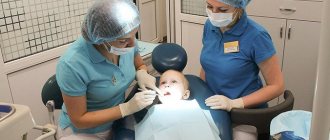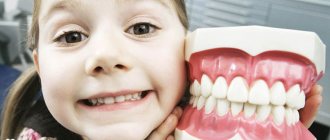Composition and release form
Miramistin is a 0.01% solution of eye drops, colorless, transparent, and may foam when shaken. Each milliliter contains:
- Active ingredient: benzyldimethyl-myristoylamino-propylammonium chloride monohydrate – 0.1 mg
- Additional components: purified water.
Packaging: white polyethylene bottles of 50, 100, 200 ml in cardboard packs.
The bottle can be equipped with an applicator with a screw cap, as well as a sprayer or a spray pump to create an aerosol (however, this form is practically not used in ophthalmology). What cardboard packaging might look like is shown in the photo on the page. In some cases, the design may differ from what is shown.
Pharmacological properties
Miramistin solution is an antiseptic drug with a bactericidal effect. Shows activity against gram-positive bacteria and viruses, including herpes viruses and human immunodeficiency viruses. It also has an antifungal effect. It is also effective against antibiotic-resistant bacteria and sexually transmitted pathogens.
Miramistin prevents infection of burns and wounds. Stimulates regeneration processes. Activates local protective reactions, due to the improvement of the absorption and digestive functions of phagocytes, potentiates the activity of the monocyte-macrophage system. It has hyperosmolar activity, which allows it to stop wound and perifocal inflammation, absorbs purulent exudates, and promotes the formation of a dry scab. The use of the drug does not damage granulations, does not suppress marginal epithelization, and does not affect viable skin cells. The drug stimulates the resorption of dark spots on the cornea, prevents the formation of cataracts, prevents perforation and the development of ulcerative-necrotic and purulent complications, including when used in the treatment of burns and eye injuries.
When applied topically, it does not cause irritation or allergic reactions. The medicine, including in the form of eye drops, does not have embryotoxicity, carcinogenic or mutagenic properties: the antiseptic is harmless to the body when applied topically. It is not absorbed through the skin and mucous membranes, and practically does not enter the systemic circulation.
Indications for use
- Conjunctivitis, including chronic.
- Blepharoconjunctivitis.
- Traumatic keratitis.
- Eye burns, corneal erosions.
- Ophthalmochlamydia.
- Keratouveitis and corneal ulcers.
- Purulent-inflammatory processes in the anterior segment of the eye.
- Preoperative preparation, conditions after eye surgery.
In ophthalmology, Miramistin is used in complex treatment of the consequences of thermal and chemical burns and injuries to the visual organs in adults and children over 3 years old, as well as for infectious and inflammatory diseases. The drug can be used in combination with other antiseptic and antibacterial agents as prescribed by a doctor.
Not recommended for use with nebulizers:
- All solutions containing oils
- Suspensions and solutions containing suspended particles, including decoctions and infusions of herbs
- Solutions of aminophylline, papaverine, platyphylline, diphenhydramine and similar products
- Preparations containing alcohol solutions
- Recommendations for inhalations for children:
- Do not force the child to breathe frequently during inhalations
- Do not inhale immediately after meals
- Do not spontaneously prescribe or increase drug doses prescribed by a doctor.
- Allow your child to rest after inhalation
Directions for use and doses
The standard dosage of Miramistin solution is 2 drops conjunctivally 4-5 times daily. The frequency and volume of use in a particular case may differ from the standard ones, since in each situation the format of use is determined by the attending physician. The course of treatment can last from 3 to 10 days, which is determined by the doctor and depends on the severity of the pathology. It is not recommended to use a package form with a spray or a spray pump and spray the medicine into the affected area: this makes it difficult to calculate the dosage. It is recommended to use a package with an applicator to adjust the dose more accurately.
In order to prevent surgical infections, Miramistin solution is prescribed two days before surgery, 1-2 drops three times a day, and another 10-15 days in the postoperative period (at the same dosage) in combination with other drugs that suppress pathological activity. In some cases, the drug is dripped in a hospital setting during pre- and postoperative hospitalization.
Results and discussion
Before the start of the study, 45 (78.3%) children complained of poor health and malaise. In 24 (40.0%) children, rhinitis was complicated by symptoms of catarrhal sinusitis: difficulty nasal breathing, heaviness and pain in the head, in the projections of the sinuses. During rhinoscopy, 17 (28%) children had mucopurulent discharge from the nose in the middle and lower nasal passages, 43 (72.0%) had mucous discharge, 29 (48.0%) patients had hyperemia and swelling of the nasal mucosa . During pharyngoscopy, redness of the pharyngeal mucosa and mucus flowing down the back wall of the pharynx were observed in 48.1% of cases. In children, along with a runny nose, there were signs of acute pharyngitis and laryngotracheitis (24.0%), which was accompanied by a sore throat and dry cough; in 55% of cases the cough was paroxysmal in nature. In 40% of cases, complaints were made of chest pain when coughing. In 26.7% of children with symptoms of tracheitis, the cough was accompanied by the separation of viscous mucous sputum.
The presence of acute inflammatory process activity in 41.7% of children with acute respiratory diseases was evidenced by leukocytosis up to 11.08±1.4·109/l in 62.5% of them and an increase in ESR on average to 16.2±1.45 mm/h in 79.2%.
When using inhaled miramistin solution in children with symptoms of nasopharyngitis, the cough became milder, less frequent after the 2nd day of treatment, in 75% of patients it completely disappeared by the end of the course; sputum discharge improved, nasal congestion decreased, and the amount of discharge from the nasal passages decreased.
In 40% of children with symptoms of laryngotracheitis, cough complaints decreased significantly after the 4th day of inhalation. Against the background of a decrease in the number of coughing episodes in children in the main group, a change in the nature of sputum was recorded - the viscosity decreased, and the discharge acquired a mucous character. The cough became moist, more productive, its intensity decreased, which was accompanied by a significant decrease in sore throat and pain in the chest during coughing attacks. In 25% of children, the cough stopped completely after the 5th day of treatment, in half (45%) of the children - after the 7th day, in the remaining patients - after the 10th day of inhalation.
In the control group, the positive dynamics of clinical symptoms were less pronounced and occurred 3-4 days later ( Fig. 1
).
Under the influence of inhalation of Miramistin solution, favorable dynamics of the auscultatory picture were observed in the form of a decrease or disappearance of wheezing in the lungs after the 6th day of treatment in 65% of children with laryngotracheitis, in the remaining children - after the 8th day of inhalation. In the control group, the disappearance of wheezing was observed at a later date: in only 20% of children, wheezing disappeared by the end of the treatment course.
To assess the dynamics of subjective complaints, SAS was used. SAS data showed that by the end of the course of treatment, children of all groups had improved well-being and motor activity.
In children with symptoms of nasopharyngitis, nasal congestion, according to the SAS, decreased from 8.49±0.137 to 2.00±0 points, discharge from the nasal passages - from 9.25±0.155 to 2.00±0.10 points ( Fig. 2
).
In the control group, the dynamics of the severity of nasal congestion and nasal discharge decreased from 7.99±0.207 to 4.00±0.100 points and from 8.89±0.266 to 4.92±0.140 points, respectively ( Fig. 3
).
According to SAS data, after the first inhalation of miramistin solution in children with symptoms of laryngotracheitis, the intensity of cough decreased (from 9.30±0.179 to 7.70±0.193 points), weakness significantly decreased and performance increased. A significant decrease in subjective symptoms in children with symptoms of laryngotracheitis in the main group was noted after the 4th day of inhalation. In 2 children who received treatment for 10 days, by the end of treatment the severity of subjective symptoms decreased to 1 point ( Fig. 4
).
In the control group, the severity of subjective symptoms decreased gradually and by the end of the observation remained at an average level of 5.7 points.
Based on the studies conducted, a positive effect of inhalation of miramistin solution on peripheral blood parameters in children with acute respiratory infections who had initially reduced hemogram values was established, characterized by normalization of the leukocyte count and ESR in all children, which indicates an anti-inflammatory effect.
Analysis of the flow-volume curve data showed that at the beginning of the study, 70% of patients with complicated tracheitis had an average decrease in respiratory function below the age norm (POS - 69.24±0.23% D, FEV1 - 75.45± 0.67%D).
Under the influence of inhalation of miramistin solution, a tendency towards an increase in reduced indicators was noted (POS up to 73.02±0.34%D and FEV1 up to 82.36±0.41%D), but no significant dynamics were identified.
In children of the control group who received miramistin in the form of a spray, indicators of external respiration function remained at the same level.
During the study, daily monitoring of peak expiratory flow (PEF) was carried out in children with symptoms of tracheitis, which made it possible to monitor the state of external respiration and evaluate the effectiveness of the therapy. The initial PEF values in 25% of these children were below the age norm. In the course of the study, under the influence of inhalation of miramistin solution, a tendency was noted to increase the average PEF values after the 5th inhalation in almost half (45%) of children (from 66.79±0.76 to 74.22±0.62%D) , by the end of the course there was a significant increase in indicators to 78.35±0.89%D ( p
<0.05).
In children who received miramistin in the form of a spray, similar dynamics of PEF indicators were not recorded, which indicated a more pronounced positive effect of inhalations ( Fig. 5
).
Analysis of the initial level of physical fitness of school-age children with acute respiratory infections revealed a decrease in the degree of development of speed-strength capabilities in 70% of children, and a decrease in the level of development of strength capabilities in 80%.
Data from a repeated study of the functional state of the muscular system in all children after recovery indicated positive dynamics in speed-strength indicators of physical fitness (standing long jump, dynamometry).
A comprehensive assessment of the effectiveness showed a significantly higher therapeutic effectiveness of inhalation of Miramistin solution (87.5%) than when using Miramistin in the form of a spray (75.0%, p
<0.05), due to an increase in the pharmacotherapeutic activity of the drug due to an increase in the total volume of the drug suspension and the contact surface of the aerosol obtained using a nebulizer.
Contraindications
- Individual hypersensitivity.
- Pregnancy, lactation.
- Children under 3 years old.
Information on the use of the drug during pregnancy and lactation is not provided, which does not allow us to predict whether Miramistin will have any effect on the fetus. If indicated, the use of the drug may be justified if the potential benefit to the mother outweighs the possible risk to the fetus. In this case, the drug is prescribed by a doctor. Since Miramistin is practically not absorbed and does not enter the bloodstream, the risk of negative effects on the fetus is minimal. However, due to the lack of any reliable data and studies on the use of Miramistin in pregnant women, it is not recommended to instill the solution without a doctor’s prescription.
special instructions
During treatment with Miramistin solution, it is better to refrain from wearing any types of contact lenses. It is recommended to use other methods of vision correction, since wearing contact lenses for inflammatory eye diseases can complicate treatment and lead to negative consequences. If for some reason the use of alternative methods of correction is impossible, the lenses must be removed before using the drug and put on 15 minutes after instillation.
After instillation of Miramistin solution, you should not drive or engage in potentially dangerous activities for 30 minutes.
The drug is intended for external use only. Ingestion of the medicine, as a rule, does not cause serious consequences, but can lead to nausea and the development of individual allergic reactions. In case of accidental ingestion of the product, especially by young children, it is recommended to perform gastric lavage and use enterosorbents (for example, activated carbon) according to the instructions. If any negative reactions occur, you should consult a doctor as soon as possible.
Store Miramistin solution at a temperature not exceeding +25° C. It is recommended to keep the drug in a place inaccessible to young children.
Shelf life – 3 years. Do not use after the stated expiration date.
Material and methods
Clinical observations and comparative studies were carried out in 60 children with acute respiratory diseases who received inhalation of miramistin solution through a nebulizer (40 children) and in the form of a spray (20 children - control group) 2 times a day for 10 days. Inhalations were carried out through a mask using a nebulizer using 3-4 ml of a standard 0.01% aqueous solution of Miramistin. Irrigation of the pharynx was carried out with a 0.01% solution of miramistin in the form of a spray.
The effectiveness of Miramistin was assessed on the basis of dynamic observation data in accordance with the results of various research methods (general blood count, rhinoscopy, pharyngoscopy, assessment of the dynamics of subjective complaints using a sensory analogue scale (SAS) on a 10-point system, examination of external respiratory function, monitoring peak expiratory flow, studying the level of physical development and physical fitness of children).
The studies were conducted in accordance with the requirements of the Declaration of Helsinki. Statistical processing of the study results was carried out using standard computer programs Statistika 7.0 and SPSS 15.0.
